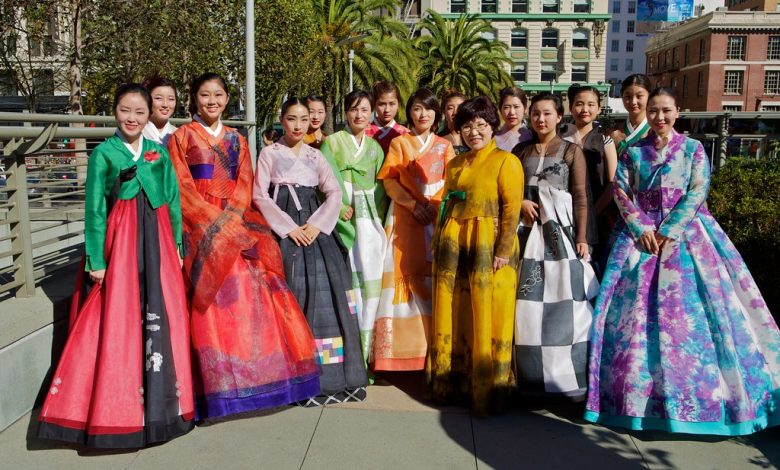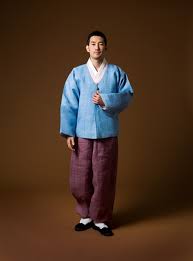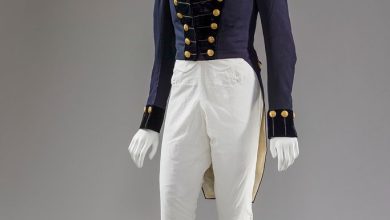Some Interesting Facts You Need To Know About Korean Fashion

Korean Fashion
The traditional Korean clothing is the hanbok (in South Korea) or Chosŏn-ot (in North Korea). Hanbok is a term referring to the traditional clothing worn by Koreans. Korean aristocrats and rulers wore clothing with influences from both the foreign and indigenous cultures.
This included significant Chinese influence, leading to the development of unique styles, Samui from the Song Dynasty, gwanbok worn by male officials were commonly adopted from and/or influenced by court clothing of Tang, Song, and Ming dynasties, and court clothing of women was adopted from the clothing style of royalty. During the Tang and Ming dynasties, the cheolik came from Mongol clothing and was bestowed by the Ming court and the magoja came from Manchu clothing.
The cultural exchange was also bilateral and Goryeo hanbok had a cultural influence on some Yuan dynasty clothing worn by the upper class (i.e. the clothing worn by Mongol royal women clothing and in the Yuan imperial court. Commoners were less influenced by these foreign fashion trends, and mainly wore a style of indigenous clothing distinct from that of the upper classes. However, the closure of the jeogori to the right is an imitation of the Han Chinese jackets.
Basics of Korean fashion
A Korean fashion outfit can be considered a range of different companies as a whole. The collection includes skirts and jumpers, matching patterns, and a lot of jewelry. Despite that, each outfit conveys the same vibe. Dresses and jumpers are usually worn with long denim jeans and striped tops on the street.
They usually wear basic clothes with accents to highlight certain outfit parts. However, sometimes it can be complicated. Different patterns, bold colors, and unique accessories are used in Korean fashion. The features of K Fashion have drawn me in, and I’m having a great time with it.
Design and construction:
Traditionally, women’s hanbok consists of the jeogori (a blouse shirt or a jacket) and the Chima (a full, wrap-around skirt). The ensemble is often known as Chima jeogori. Men’s hanbok consists of jeogori and loose-fitting baji (trousers) Jeogori.
Both men and women wear the jeogori as the basic upper garment of the hanbok. It covers the arms and upper part of the wearer’s body. The basic form of a jeogori has git, dongjeong, goreum, and sleeves. Gil is the large section of the garment on both front and back, and git is a band of fabric around the collar. A dongjeong is a removable white collar that is placed over the end of a git. Goreu is coat-strings that tie the jeogori.
Read More: https://postsify.com/how-to-go-split-screen-on-a-chromebook-in-simple-steps-and-view-two-windows-at-once/

Jeogori are tied with a string known as a goreu.In women’s jeogori, the cuffs are kkeutdong, which are a different color. In all likelihood, these are the oldest known jeogori. The one found in a Yangcheon Heo clan tomb dates from 1400 to 1450 and the other was discovered inside a Buddha statue at Sangwonsa Temple (presumably left as an offering) and date from the 1460s. Over the centuries, Jeogori has taken on a variety of forms.
While men’s jeogori remained relatively unchanged, women’s jeogori drastically shortened during the Joseon dynasty, reaching its shortest length in the late 19th century. However, modern jeogori for women is longer than its earlier counterpart due to reformation efforts and practical reasons. Nevertheless, the length is still above the waistline. However, modern goreum are rather long and wide, in contrast to traditional goreum, which are short and narrow. Jeogori are available in different types of fabrics, construction techniques, and shapes.
Chima:
Chima refers to “skirt,” which is also known as sung or gun in Hanja. Sokchima refers to the petticoat layer beneath the underskirt. Ancient murals of Goguryeo and an earthen toy excavated from Hwangnam-dong, Gyeongju, indicate that Goguryeo women wore a chima with jeogori over it, covering the belt.
While striped, patchwork, and gored skirts were known from the Goguryeo and Joseon periods, Chima skirts were commonly made from rectangular cloth that was pleated or gathered into a band. This waistband extended past the skirt fabric itself and served as ties for fastening the skirt around the body.
Up until the early 20th century, the sokchima was mainly made in the same way as the overskirts, before straps were added. Some outer chima gained a sleeveless bodice by the middle of the 20th century.
Baji:
Hanboks are finished off with a baaji at the bottom. ‘Trousers’ is what Koreans call them formally. It does not fit as tightly as western-style pants. To make the clothing ideal for sitting on the floor, it has a roomy design. In Korea, baji is commonly used for all sorts of pants, and as a result, it functions the same way as modern trousers do. To fasten the baji, a band is tied around the waistline.
Depending on the style of dress, the sewing method, embroidery, and so on, baaji can be unlined, leather, silk, or cotton pants.
Po:
A po is a generic term for an outer robe or overcoat. In general, there are two types of PO: the Korean type and the Chinese type. Korean art dates back to the Three Kingdoms period in Korea, and it is used today. Until the late Joseon dynasty, belts were used. They were replaced by ribbons. Cold protection was provided by durumagi, a type of PO. A robe like this had been widely worn over a jeogori or baji as an outer garment. Juchaui or juui are other names for jumagui.
Chinese po is a different style from all the others. From the period of north-south states until 1895, when Korean type durumagi was adopted nationwide, they were used through time.
Jokki and magoja:
Jokki (Korean: vest) is a type of vest, whereas magoja is an outer jacket. The jokki and magoja were created at the end of the Joseon dynasty (1392-1897) when Western culture began to influence Korea. However, these garments are still considered traditional clothing. In addition to the jeogori, each also has a top layer.

Magoja clothing was originally inspired by the clothes of the Manchu people and was introduced to Korea after Heungseon Daewongun, the father of King Gojong, returned from his political exile in Tianjin in 1887. Due to the cold climate in exile, magoja were derived from the magwae he wore. In Korea, magoja is popular due to its warmth and ease of wearing. “Deot jeogori” (literally “an outer jeogori”) or magwae is another name for it.
Unlike jeogori and durumagi (overcoats), magoja does not have git or goreum (the fabric band that trims the collar). Originally a male garment, the magoja became unisex over time. Magoja for men has seop (Korean: Sep, overlapped column on the front) and is longer than magoja for women so that both sides are open at the bottom. Silk magojas are usually embellished with amber buttons, which are usually made from silk. As opposed to women’s magoja, which has buttons on the left side, men’s magoja has buttons on the right side
Apart from this, if you want to know about in North Korea then please visit our Business category




